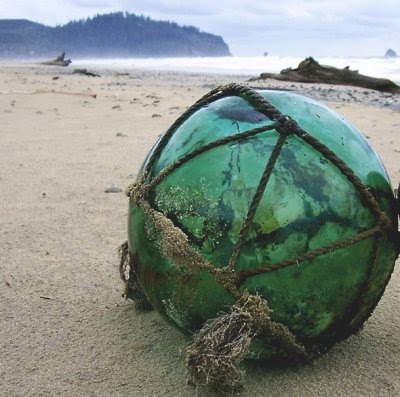Well, here's a proof that the symmetric tetrahedron is not a local minimum - in fact, I claim that it's basically a local maximum!
Fix the positions of three of the vertices $v_1$, $v_2$, $v_3$ of the symmetric tetrahedron. First, let's find the point $p$ on the sphere for which the sum of the lengths of geodesics connecting $p$ to $v_1$, $v_2$, $v_3$ is minimal. By Torricelli's Theorem, this point must either be one of $v_1$, $v_2$, $v_3$, or a point where all edges leaving it meet at $120$ degrees. Thus, $p$ is one of $v_1$, $v_2$, $v_3$, the fourth vertex of the symmetric tetrahedron, or the antipodal point to one of the four points I already mentioned. By direct calculation, we see that $p$ is the antipodal point to the fourth vertex of the symmetric tetrahedron.
Now if we move the fourth vertex to any point $q$ nearby, and draw three great semicircles connecting it to the antipodal point $q'$ and passing through the other three vertices of the symmetric tetrahedron, we see that the sum of the lengths from $q$ is three pi minus the sum of the lengths from $q'$. Since the sum of the lengths from $q'$ is at least the sum of the lengths from $p$, the sum of the lengths from $q$ is at most the sum of the lengths from the top vertex of the symmetric tetrahedron. Thus, we can basically move the top vertex anywhere we like without increasing the total length of the string.
The next thing you will probably be tempted to try is the symmetric cube (using the same trick to handle the vertices of degree three). In this case, each vertex actually is at a strict local minimum if you hold the other vertices fixed. However, I'm pretty certain that it's possible to move all four vertices on the top face simultaneously either to the top of the sphere or to the equator of the sphere without increasing the total length during the process.
Edit: Here's a proof that we can move the vertices on the top face of the cube all upwards or downwards without increasing the total length. Let $x$ be the angle that the line connecting a vertex on the top face to the center of the sphere makes to the plane through the equator of the sphere. We are going to calculate the total length of all string above the equator as a function of $x$ - it's going to be $4x + 4(\mbox{angle between adjacent vertices})$. The dot product of the vectors corresponding to adjacent vertices is $\sin^2(x) = \frac{1-\cos(2x)}{2}$. Letting $a = \cos(2x)$, we see that the total length above the equator is $2\arccos(a) + 4\arccos(\frac{1-a}{2})$. Thus, since $\arccos$ is a concave function for $a$ between $0$ and $1$, that total length achieves its maximum when $a = \frac{1-a}{2}$, i.e. $\cos(2x) = a = \frac{1}{3}$, which is the initial angle we started out with on the cube.





